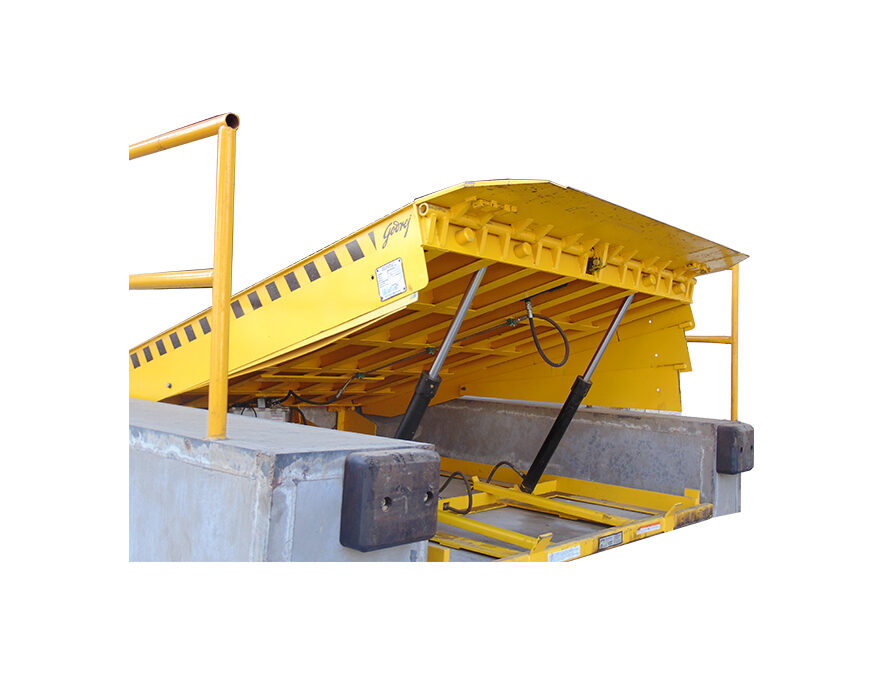The warehouse loading dock is the main location that determines the volume of business for the day, month or year. Treating it like just another location in the warehouse is dangerous for business.
Warehouse managers must realize how these areas are integral for business operations and work towards improving their efficiency. There are numerous vehicles accessing warehouse loading docks. Since these vehicles differ in size, having loading dock levellers compensates for the height difference in managing loading and unloading.
The details covered below will cover the basics of warehouse loading docks and how to make selections:
What Is A Warehouse Loading Dock?
A warehouse loading dock is an entry and exit point for loading and unloading goods from vehicles. This dock is the primary area that determines warehouse efficiency by managing the flow of goods. A dock that does not live up to expectations will pose risks that affect the company’s profitability.
Dock Levellers
Dock levellers are among the many material handling systems available in a warehouse. They bridge the gap between the dock and the vehicle, equalizing the loading heights for easy movement of the trailer bed when loading and unloading. Loading dock levellers comprise a ramp and a lip that move jointly to smooth warehouse operations.
Types of Dock Levellers
There are numerous types of warehouse docks to explore. Each type offers different security levels and may cost more or less in maintenance.
Without going into much detail, here are the common types of loading docks:
- Hydraulic Dock Levellers
These levellers use cylinders and pumps for lowering and raising the ramp and lip to align with the trailers. Hydraulic dock levellers are efficient and safe and have a higher lifting capacity. Considering their throughput capacity, these dock levellers can be costlier than other types.
- Air Powered Dock Levellers
The second type of dock leveller uses airbags or bellow systems that raise the loading platform to fit the trailer. They are more economical than hydraulic levellers because they have a reduced carrying capacity.
- Mechanical Dock Levellers
These have pull chains for manually raising and lowering the ramp and lip. A warehouse operator walks over the ramp to level it with the trailer or van. Mechanical dock levellers are the cheapest of all dock levellers but are only ideal for basic operations. These levellers also help with extreme floating on situations where the trailer is moving.
Choosing the Right Dock Leveller for a Warehouse
Loading and unloading needs vary depending on the business requirements. There are numerous styles to choose from to meet business demands.
The three loading dock leveller styles to consider are:
- Pit Style
Manufacturers and users of pit-style dock levellers have them mostly on recessed concrete pits. That makes the dock leveller flush with the surrounding concrete when not in use. These dock levellers have a higher loading capacity and are extendable up and down based on trailer height. They are either air, hydraulic or mechanically powered.
- Edge of Dock
These levellers are built directly into the dock face to bridge the gap between the dock’s door and the trailer on the outside and are more economical than pit-style and vertical storing levellers. They may need a lot of improvement in heavy-duty operations due to their lower carrying capacities.
- Vertical Storing Dock
Warehouse operators install vertical storing dock levellers within the loading dock. They work perfectly for climate-controlled warehouses or keeping debris, dust and pests outside the dock area. These dock levellers are only used in fewer instances because the trailer door must be closed when approaching.
How to Maintain Warehouse Loading Docks?
Dock Maintenance and Care
Maintaining loading docks on time is essential for preventing issues when loading and unloading. A damaged or faulty dock leveller may cause forklift accidents, trailer separation, and product damage within a warehouse. Dock maintenance is advisable after 90 days, with more attention on electrical, mechanical and hydraulic components.
Maintaining the condition of a dock leveller requires constant inspection, deep cleaning, lubrication and adjustment of movable parts. Warehouse managers and equipment operators must keep records of any issues.
Docks are also where accidents are likely to occur in the warehouse. Material handling systems and vehicles operate within this area. Safety and security are crucial. Keeping the dock safe minimizes the risk of injury to employees and maiming workflow.
Warehouse loading docks are put under constant use and can easily wear out. It is paramount to pick a solution that matches business requirements. With the information above, companies can make informed decisions for long-lasting services.


